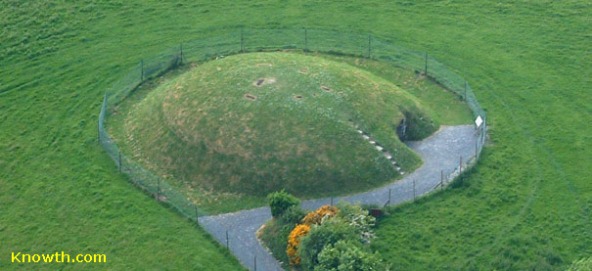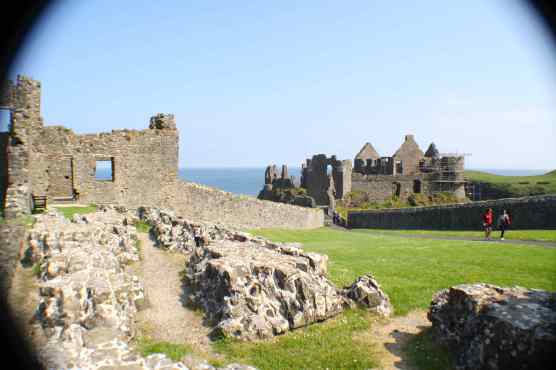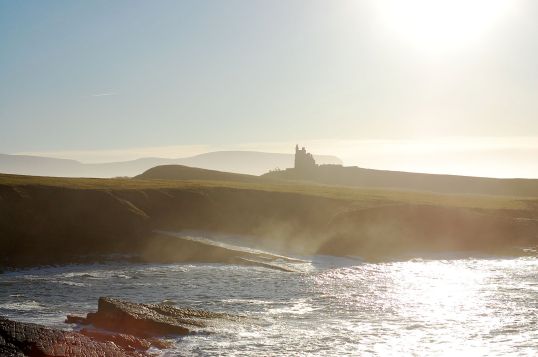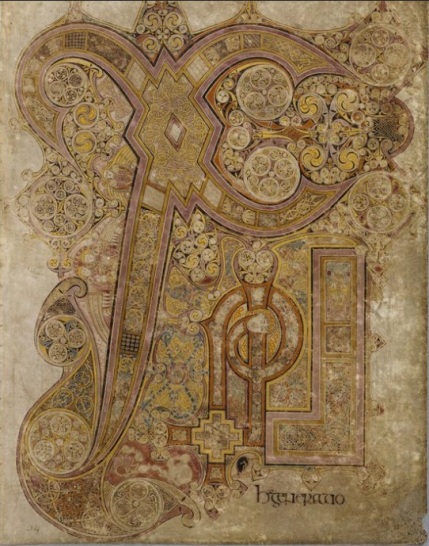My mother and I enjoy talking about the different sites we visited while in Ireland, but occasionally, we also just shake our heads at the things we wish we’d known ahead of time, before arriving and starting our adventures. Thus came the idea of creating an Irish Survival Guide – a collection of all we’ve learned so far through research and first-hand experiences, to hopefully save other travelers from making some of our mistakes.
First up comes a fairly big part of exploring Ireland: getting around the country, and figuring out what rental car is best for you.
As a note, I’m all for tour groups, too – they’re a wonderful way to take in a large swath of the country and can give you peace of mind because you won’t be the one responsible for driving after a long day of sight seeing. But self-guided tours are definitely the way to go once you step off the well-beaten tourist track, allowing you to venture to regions buses simply can’t go due to their size. Keeping this in mind (small car = increased accessibility to more sites), here’s my survival guide for renting a car and driving in Ireland.
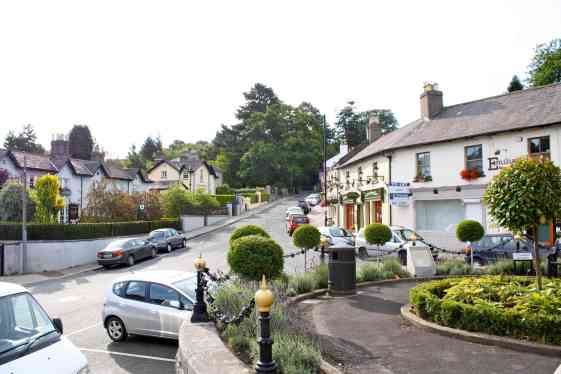
The main road running through Enniskerry’s center square is a pretty good example of how roads look in Ireland’s smaller towns. From my 2011 trip.
Familiarize yourself with Ireland’s road classifications
This is something we learned very quickly on our second trip. The differences between road types in Ireland can be stark, so it’s best to know what you’re getting yourself into before you take what sounds like the perfect shortcut.
Motorways, or M routes, are the widest, most accessible roads. Their speed limits are high – 120km/hr (75 mph) – and they’re generally double lanes. Areas to pull off the road and stretch for as long as you need are fairly common and easier than finding a filling station off an interstate would be in the US – they almost make me think of the pit stops you’ll see on racetracks, just a gentle drag off the main road.
Unfortunately, you’ll most likely spend only a short fraction of your trip on the M routes. National (N) roads are far more common, but trickier to maneuver. Speed limits are up to 100km/hr (about 62 mph), but don’t expect to travel that fast, especially not at first! These roads are much narrower than M routes, sometimes to the point you’ll wonder how two cars are supposed to meet without crashing. Corners are often sharp and blind, especially with Ireland’s thick hedges. Yet roads can get narrower still.
Enter the Regional (R) roads. These are the stuff of nightmares, but what you’ll be spending a lot of time navigating if you’re interested in seeing megaliths and other remote sites. Hedges are thicker, roads are smaller, yet the speed is still uncomfortably high – 80km/h (50 mph).

A pretty good example of what an R road looks like. Thankfully, we didn’t go down this one in 2011.
I’m a country girl, used to Missouri’s winding backroads and dirt “roads” through fields on the farm. But Ireland’s R roads left me baffled. There’s no way you can drive that fast on those things! Especially since they’re still two-way traffic roads, most of the time. In some of our travels, we literally had to stop with the windows open to listen for other cars coming before turning out of blind side roads, because there was no way we could see anything coming. Yes, what we saw by taking these roads was well worth the time and effort, but just remember – R roads are not shortcuts. You will not gain time by leaving an N road or M route to take what looks like a shorter stretch of R roads.
Google Maps’ travel times are straight up lies
This is probably one of the most important things to know before you start planning your itinerary. We were told on our first trip to Ireland, where neither of us had to drive, that Ireland is simply 6 hours from northernmost point to southernmost point, and 4 hours across. With that in mind, and Google Maps’ estimated travel times, we didn’t see any harm in planning a fairly spread out route for our second trip.
However, we had no real idea what the roads would be like – our driver couldn’t take us down any R roads because of the bus’s size, and quite frankly, who really pays attention to road conditions when someone’s driving for you like that? Especially when you know you won’t be back for several years at the very least?
Google Maps is a wonderful tool, especially when you’re in the early planning stages, but it assumes you’ll be driving at the posted speed limit, or at least close to it. It doesn’t account for nerves when getting used to driving on the opposite side of the road, or the learning curve that comes with navigating those narrow roads. Or how it’s physically impossible to drive that fast on an R road as a tourist without having a heart attack. (Note: I might be a bit prejudiced against R roads.)
A good rule of thumb we learned from a local taxi driver in Killarney is that you should double or triple the travel time Google Maps gives you. And he was right – even the fairly straightforward drive from Killarney to Galway, a 2 hour, 38 minute drive by Google Maps using N roads and an M route, took us around six hours. Not pleasant in the slightest!

A map of lies…
Plan ahead to get lost and to travel slow, and remember this when planning accommodations. Because we didn’t know this before reserving rooms, we constantly arrived several hours later than planned, often barely finding time to eat before places started to close for the night.
Investigate your options for rental car insurance or CDW thoroughly
It’s probably not surprising, given Ireland’s narrow roads and thick hedges, that most credit cards won’t offer rental car insurance within the country. Instead, many car rental companies offer what’s called CDW, or a collision damage waiver. It’s often factored into the rental price quoted at you, and means that the rental company won’t collect fees against you for damage done to the vehicle – to a certain point. Basic CDW agreements generally leave the renter at risk for covering the first $1-$2k in damages, something that could leave you a nervous wreck on some of the more treacherous roads.
But there are other options. My mother and I rented from Dan Dooley, and though I’m afraid I don’t remember the exact name of the coverage we purchased since it was part of a bundle,I know it was better than the basic CDW – as long as we didn’t lose the key or put the wrong kind of gas in the tank, we didn’t have to worry about any damage done to the car.
Definitely call ahead of time to learn exactly what you’re paying for, both so you’ll not be faced with surprise charges down the road and so you’ll secure a better rate than you’d be quoted at the pick up desk.
Consider driving diesel
I know this one probably sounds pretty odd, considering how diesel fuel is constantly higher than unleaded in the States, but there’s sound logic here that my mother and I learned first hand. Diesel cars are often more fuel efficient than their counterparts, meaning you can go farther on less gas, saving you both time and money. But remember – gas pump colors are not the same as they are in the States, they’re reversed. Always check that you’ve picked up the right pump before you start refueling to avoid damaging the car.

Another quick shot from 2011, showing what M routes typically look like.
If your car seems to stall every time you break for a few seconds, don’t panic!
This is another big one I wish we’d known ahead of time. Like many people, my family primarily drives older cars in the States. So, when our car seemed to cut out and stall every time we came to a stop in Dublin’s city centre, we panicked, assuming something was wrong.
Thankfully, as our rental company confirmed with a quick phone call, this was completely normal – some cars in Ireland are fitted with a new “stop-start” system that helps conserve fuel and reduce emissions when a car’s stopped for more than a few seconds. Simply releasing the break and tapping the gas gets the engine to going again, and there’s often a button on the console to prevent this feature from kicking on if it does give you undo tension, like it did for us.
Farm equipment always wins
This might seem like an odd side note, but it’s one that left my mom and I staring. Farmers are the kings of the road, and everyone defers to them, even larger trucks. If you meet a tractor on a road too narrow to pass side by side, you’re expected to either find a way to pull over or back up until they can pass you. Our tour guide from our first trip said the same’s expected when a car meets a bus, and meeting either is equally terrifying.
ALWAYS have an Irish roadways map with you, even if you have a GPS.
I honestly can’t remember how many times our GPS got us helplessly lost while looking for megaliths around the Irish countryside. We’d opted to upgrade our own GPS to include Irish roads, in the hopes of avoiding a steep learning curve with a new device, but it didn’t matter – we still ended up stuck in the middle of nowhere time after time. The worst time this happened was somewhere in Meath, while trying to track down Fourknocks. Even with directions from another blogger, and two stops to ask locals for directions, we somehow ended up on a road so degraded there was more grass than pavement. And when we turned to the GPS to even tell us where we were, so we could use the map to find our way back to a major highway? The blasted thing said our location was unknown – it couldn’t even give us our coordinates.

The road we took into Killarney back in 2011. Areas like the Gap of Dunloe were even narrower – I don’t advise driving on those, even when it is allowed.
If you do rely on a GPS and get lost, use its points of interest feature to help orientate yourself
We never did find Fournocks. After cringing with each scrape and bump from our car’s undercarriage on that road, we decided we had to find some way back to the main roads. My mom realized that, even though our GPS couldn’t tell us where we were, it could direct us to the nearest Garda (police) station. We used our map, the rough area we knew we had to be in, and that GPS feature to slowly but surely find our way to the larger N roads. Without it, I honestly don’t know how long we would have spent driving in circles, just hoping to find a sign pointing us in the right direction.
Before you set out, check your GPS settings
This is probably one of the top things I wish we’d known before leaving Dublin on day 1. Because we’d never had issues with our GPS back home, we never imagined settings could change when we used an Irish road map extension. In the States, our GPS is set to find the quickest route, regardless of traffic flow. But on our last night in Ireland, we discovered the settings had somehow been tweaked to make our GPS seek out the least traveled roads available. Suddenly everything made sense – why we ended up lost in Leitrim on our way to Northern Ireland, how we ended up driving in circles around Ahenny’s high crosses and Jerpoint Abbey, why we got lost in Sally Gap when there was an N road that lead straight to Glendalough.

One of Sally Gap’s narrow stretches. This road became even more nerve wracking anytime it veered near the edge of a sheer drop.
Had we checked our GPS settings before setting out, we probably could have saved a lot of time and frustration during our trip. Yet, at the same time, by getting lost so frequently, we did get to experience parts of Ireland we wouldn’t have seen otherwise. It’s anyone’s guess which would have been truly best, though perhaps it’s safe to say that you can get a taste of both by investigating scenic routes in the region you’ll be exploring, then weigh out your options based on how that day’s gone up to that point. At least then you won’t be entirely at the mercy of your GPS’s whims.
I’d originally planned to combine these tips in a single post, but as the list grew, I realized it would be more manageable as a series. Keep a look out for future guides, such as money tips and ways to get a true taste of Ireland’s culinary offerings.
And please, if you have any questions or suggestions for future blog posts and guides, let me know!









